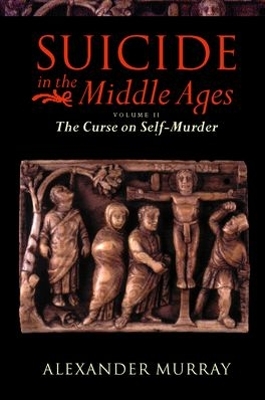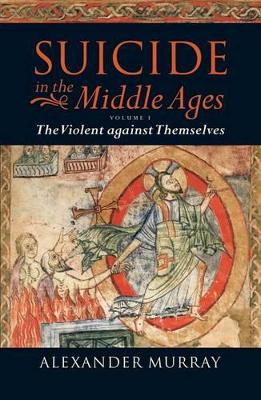Suicide in the Middle Ages
2 total works
A group of men dig a tunnel under the threshold of a house. Then they go and fetch a heavy, sagging object from inside the house, pull it out through the tunnel, and put it on a cow-hide to be dragged off and thrown into the offal-pit. Why should the corpse of a suicide - for that is what it is- have earned this unusual treatment? In The Curse on Self-Murder, the second volume of his three-part Suicide in the Middle Ages, Alexander
Murray explores the origin of the condemnation of suicide, in a quest which leads along the most unexpected byways of medieval theology, law, mythology, and folklore -and, indeed, in some instances beyond them. At an epoch when there might be plenty of ostensible reasons for not wanting to live, the ways used to block the suicidal
escape route give a unique perspective on medieval religion.
Murray explores the origin of the condemnation of suicide, in a quest which leads along the most unexpected byways of medieval theology, law, mythology, and folklore -and, indeed, in some instances beyond them. At an epoch when there might be plenty of ostensible reasons for not wanting to live, the ways used to block the suicidal
escape route give a unique perspective on medieval religion.
`Suicide' and `the Middle Ages' sounds like a contradiction. Was life not too short anyway, and the Church too disapproving, to admit suicide? And how is the historian supposed to find out?
In this first volume of his trilogy, Alexander Murray takes the methodological question first, as a key to the testing of all other assumptions. After answering it, he shows that there were indeed suicides, of types and configurations astonishingly modern, if not in numbers per capita. 'The violent against themselves' included rich and poor, townsmen and peasants, men and women, married and unmarried, their motives all too familiar: physical and mental illness, chronic or sudden
poverty, arrest, disgrace, heartbreak in love, even what modern doctors might call depression. Following the sources as close to the events as they will lead, the author calls on these fugitives to give an account of themselves. In doing so, they also shed new light on features of their world we thought we all
understood.
In this first volume of his trilogy, Alexander Murray takes the methodological question first, as a key to the testing of all other assumptions. After answering it, he shows that there were indeed suicides, of types and configurations astonishingly modern, if not in numbers per capita. 'The violent against themselves' included rich and poor, townsmen and peasants, men and women, married and unmarried, their motives all too familiar: physical and mental illness, chronic or sudden
poverty, arrest, disgrace, heartbreak in love, even what modern doctors might call depression. Following the sources as close to the events as they will lead, the author calls on these fugitives to give an account of themselves. In doing so, they also shed new light on features of their world we thought we all
understood.

